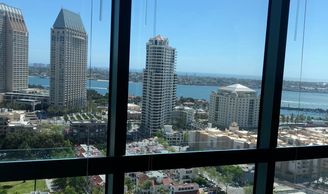Wrongful termination arises when an employer fires or terminates an employee for an illegal reason. Only an employee can bring a wrongful termination case, not his or her family because the wrongful termination claim is based off the employee-employer relationship.[1] The type of recovery is usually dependent on the category of the employee.
Who is an employee for the purposes of wrongful termination?
Employees are ones who are under the control of the employer. For instance, an independent contractor would not fit under this definition because he or she asserts her own control of how the work is done, when, how much he or she is paid, and the equipment used.
Independent contractors v. employees
Independent contractors, also known as 1099s or freelancers, is defined under California law.[2] These people usually take on projects and are free to work on multiple tasks at once. They usually work for themselves and are hired by someone to finish an assignment. An example of an independent contractor can be when hiring someone to paint your house.
An employee, on the other hand, is someone hired by a business and responds to a boss.[3] There is an employer-employee relationship and the employee finish specific tasks set out by his or her employer, is paid by that employer, and receives benefits from that employer.[4]
There are several tests one can use in order to determine whether a worker is an independent contractor or an employee. However, they all include an important factor: control.[5] If there is the right to interfere and more control exists, then it is likely an employer-employee relationship. Ayala v. Antelope Valley Newspapers, Inc., 59 Cal. 4th 522.
ABC Test to Determine Employee or Independent Contract
An employee-employer relationship arises when the employee works for the benefit of the employer. Riley v. Southwest Marine, 203 Cal. App. 3d 1242.
The ABC test prohibits a company from classifying a worker as an independent contractor unless the the company can establish that:
(A) The hiring company does not control or direct the worker in performing the work in fact or under the terms of a contract.
(B) The work performed is outside the “usual course” of the hiring company’s business.
(C) The worker is customarily engaged in an independently established trade, occupation, or business of the same nature as that involved in the work performed.
ABC test excludes any “bona fide business-to-business contracting relationship,” that is, a relationship under which a sole proprietor, partnership, or other form of business provides services to another business.
The contracting business to which services are provided must satisfy 12 criteria to avoid application of the ABC test, including showing that the business service provider provides services directly to the contracting business and not to customers of the contracting business; the business service provider “actually contracts with other businesses to provide the same or similar services and maintains a clientele without restrictions from the hiring entity”; and the business service provider can set or negotiate its own rates, and set its own hours and location.
Other factors courts look at when determining whether someone is an employee or independent contractor include:
- Opportunity for profit or loss
- Higher opportunity for profit/loss, independent contractor
- Workers investment in own equipment or materials
- Spend more money on own equipment, likely independent contractor
- Specialized skills
- More specialized the skills the more the worker looks like independent contractor and not an employee
- Degree of permanence in the relationship
- Licensed contractors with certifications issued by the State of California are considered employees for this purpose.
Federal Court test – Economic Realities
If a complaint is brought in federal court, the economic realities test is usually applied instead of the manner and means test specific to California. Here, a court considers factors including: whether employer had authority to hire and fire; whether employer supervised and controlled work schedules and condition of worker’s employment, and whether employer determined payment.[9] These are just a few of the factors the courts look at and is not an exhaustive list.
Who has more protection from wrongful termination?
An employee is afforded more protections and benefits under California law than an independent contractor. These include: right to meal breaks, overtime; minimum wage; workplace safety laws; worker’s compensation; family and medical leave; social security payments by the employer; and protection for unlawful discrimination, just to name a few.
Who has more freedom?
Although independent contractors have less protection, they do have more freedom because they do not have someone interfering and controlling their every decision. Unlike employees, they can: set their own pay; set their own hours; accept their own projects; work as often or as little; take vacations without asking permission or using time off; and decide how to complete their work, just to name a few.
An independent contractor can bring a claim for a breach of contract between himself against the employer but likely will not be able to bring a viable wrongful termination suit as he or she is not considered an employee under California law.
“At will” presumption
California law presumes an employee is at will meaning the employee can leave his or her job at any time and allows an employer to fire an employee at any time, no reason necessary.[10] However, there are still limitations. An employer may not fire an employee based on:
- Race, gender, disability, sexual orientation, religion[11]
- Political beliefs[12]
- Requested time off legally-eligible to take[13] or
- Retaliation[14]
However, if there is a contract in place that renders the employee not “at will” then the above presumptions of being able to leave or be terminated at any time is not valid.
Contracts
There are times when an employer cannot fire an at-will employee without cause. These cases include express and implied contracts.[15] An express contract occurs when there is an explicit offer and acceptance – it can be oral. An implied contract arises when looking at the circumstances around the agreement, the parties’ conduct indicates a contract.
An express contract may include a provision or understanding that firing can only occur with “good cause.”[16] This means the employer cannot just fire an employee for no reason; there has to be a reasonable and honest reason to do so.
“In deciding whether good cause exists, there must be a balance between the employer’s interest in operating its business efficiently and profitably and the employee’s interest in continued employment.”[17]
Courts may still require good cause for firing an at-will employee even if there is not an express provision. Courts look at the circumstances surrounding the agreement and the conduct of the parties.
There are many factors that are analyzed when determining if an implied contract has formed. These include:
- Polices or practices of the employer
- Employee’s longevity of service
- Assurances of continued employment and
- Practices of industry.[18]
Discrimination and wrongful termination
An employer cannot discriminate against an employee under California and federal law. If this occurs and leads to termination, a claim may be filed. Even if the employee is considered “at will,” he or she may not be fired based off discrimination.
What laws protect employees from workplace harassment?
California has implemented and follows specific laws to ensure workplace harassment is regulated and prohibited. Further, the federal government has taken steps to ensure this abuse is handled and deterred. Any of these laws can be used to bring a claim of harassment but the best option will depend on the facts of the case.
Title VII of the Civil Rights Act of 1964: this federal law prohibits discrimination (harassment) based on race, color, religion, sex, or national origin.[19]
The Americans with Disabilities Act: this act prohibits the abuse or harassment of those who suffer from mental and physical disabilities.[20]
The Fair Employment and Housing Act (FEHA): California created regulation that prohibits different types of harassment/discrimination in the workplace.[21]
FEHA is the most widely used in California as it affords the most protection to employees similar to that of Title VII. Further, FEHA applies to all employers regardless of number employees.[22] An employer is defined as any person or agent acting on behalf of that person under FEHA.[23]
What type of behavior is considered harassment?
Although employees may deal with unruly comments or actions daily, there are only certain instances when these actions reach the level of harassment. In order to be labeled harassment, the employee must be singled out or continuously endure certain actions.[24]
Forms of harassment include (but are not limited to):
- unwanted conduct,
- inappropriate words or comments,
- inappropriate jokes,
- unwanted advances,
- inappropriate propositions,
- bullying,
- derogatory comments, and
- favoritism.
Examples of harassment and what must be proven
Age
Any employee or job applicant over 40 cannot receive less favorable treatment just because of his or her age.[25]
Examples of prohibited activities include:
- Firing someone when he or she reaches a certain age
- Hiring someone just because they are younger even if the older person is more qualified
- Promoting others who are younger while deliberately avoiding older workers[26]
Language
An employer cannot fire an employee for speaking another language at work to other employees or customers.[27] This prohibition prevents an employer from discriminating based off national origin.[28]
Medical conditions
A medical condition can cause an employee to miss work or suffer pain while working. If an employee is currently or in the future will suffer from a medical condition, an employer cannot harass that employee because of the condition.[29]
Mental disability
A mental health has become a more prominent issue in today’s society. As times have changed, so has the law, fortunately. If an employee suffers from a mental disability, an employer cannot harass nor discriminate against the employee because of his or her health.[30] Examples of mental health disorders include, but are not limited to: anxiety, learning disabilities, autism, schizophrenia, and depression.
Physical disabilities:
Any physical disabilities are those bodily injuries that impair the worker’s everyday life.[31] With time, the disability will not get better. In order to prove a physical disability, an employee can show:
- Physical impairment
- Effected bodily system like neurological or
- Limited mobility.[32]
If any of these are present, the employer cannot harass the employee due to these conditions.
Religion
One cannot be harassed because of his or her religious beliefs or practices.[33] An employee is allowed to dress as he or she would in a religious setting as long as that religious belief is genuine as set out by the U.S. Constitution.
Sex and Gender
an employer may not discriminate or harass an employee based off his or her sex. Sex refers to the biological status of the person but can also include other areas like pregnancy, maternity leave, paternity leave, gender identity, and breast feeding at work.[34]
Sexual harassment
Sexual harassment is defined as, “unwanted sexual advances, requests for sexual favors, and other verbal or physical conduct of a sexual nature.”[35]
Quid pro quo sexual harassment
Quid pro quo is a Latin phrase meaning, “this for that.” In a sexual harassment claim, this type of interaction is just as it says, giving something in return for a sexual act.
Unlike hostile work environment sexual harassment, quid pro quo occurs when the aggressor does something for the aggressor and in return the aggressor gets sexual favors. An example would be an employee having sex with her boss in order to get a raise or a day off.
In order to prove a quid pro quo claim, plaintiff must show tangible employment results occurred because of a refusing his or her aggressor’s demands.[36]
Marital status
An employer cannot harass an employee based off his or her marital status meaning an employer cannot make comments whether the employee is married, single, divorced, etc.[37]
Criminal conviction
Since January 2018, most employers cannot ask applicants about past convictions before making a conditional offer.[38] An example would be offering a position based on the condition that the applicant passes a background check. This would be allowed. However, an employer cannot base his decision of an applicant if the applicant was not convicted but arrested or if the conviction has been sealed.[39]
Immigration
All employees regardless of immigration status are protected and can benefit from California’s employment regulations.[40]
However, employers are required to check and see documents proving the employee is a U.S. citizen before hiring an employee.[41]
Further, an employer once receiving the documents, cannot ask for further documentation under Federal law.[42]
If an employer decides not to hire a qualified applicant because he or she does not believe the documents are real or is not satisfied with what is presented, as long as the documents meet federal law, the employer can be found to discriminate based off national origin.[43]
Lastly, an employer cannot threaten to expose in retaliation someone’s immigration status.[44]
Political
An employer cannot fire an employee based off his or her beliefs specifically related to politics.[45] If an employer is in favor of one party over the other and only hires or keeps those employees who agree with the employer, then he or she has engaged in wrongful termination.
Bullying
Bullying is synonymous with the word harassment. Any of the above can be deemed bullying as well.
The above is not an exhaustive list but are included in protections against harassment.
Retaliation
Once a harassment claim or wrongful termination claim has been filed, an employer cannot retaliate against the employee. Retaliation comes in many forms. For example, if the employee files a wrongful termination claim then the employer fires the employee because of the claim, that would be retaliation. Although the employee does not have to be fired to prove retaliation. Under California law, this is prohibited. In order to prove retaliation, an employee must show:
He or she engaged in conduct protected under the labor code (filed a worker’s compensation claim)[46]
The employer engaged in adverse employment action (like firing the employee)[47] and
There was a link between the two above.[48]
If the above are met, the employee will successfully show the employer engaged in retaliation and recover damages. Employees may also be entitled to reinstatement of his or her position if fired or lost wages due to the employer’s actions.[49]
Constructive discharge
Constructive discharge arises when work conditions are so bad, the employee ends up leaving but in reality, has been forced to quit creating a termination by the employer. The test is object and looks at whether a reasonable person in similar circumstances and conditions of employment would have no reasonable option but to quit.[50] Understanding whether you have quit or been fired is important because certain benefits are given to those who have been fired while they are not given to those who quit like:
- Unemployment
- Wrongful termination suits
- Damages
- Discrimination suits
When have I been constructively discharged?
The court will look at the circumstances of the employment including the working conditions, interactions with others, the work given to the employee compared to others, etc. Further, the objective test stated above will be applied and the outcome must be that the employee was treated so poorly, he or she was basically forced out the door.[51] This bar is really high to prove and the courts have found that reduced pay, transfers, reassigning of shifts, demotions, and other incidents of mistreatment are not enough to prove constructive discharge.[52] If this is found, termination in fact occurred even if the employee stated, “I quit.”[53]
I think I have a case… what do I do?
If you feel you have been wrongfully terminated, you may have three options:
- speak with your employer or the human resources department,
- bring an administrative claim, or
- file a lawsuit.
It is important to remember there is a one-year statute of limitations from the time of harassment or wrongful termination to bring a claim.[54] In order to speed the process up and ensure you file within the allotted timeline, it is encouraged to seek help from a lawyer.
Moreover, there may be fear that if you complain, the employer will fire you. However, as explained above, this is illegal under California law and is known as retaliation.[55] An employer cannot terminate you just because you have filed a claim against he or she.
Although having a lawyer may seem expensive, in many of these cases, you will not pay for anything except costs associated with creating documents like printing fees, court fees, etc. the lawyer will be paid for his or her services either by the defendant or from a percentage of your winnings.
Legal Reference
[1] Casella v. SouthWest Dealer Services, Inc. (2007) 157 Cal.App.4th 1127, 1140, fn. 4
[2] Labor Code § 3353
[3] Labor Code § 3351
[4] Cal. Code Regs., tit. 8, § 11150, subd. (2)(G)
[5] Johnson v. Dep’t of Indus. Relations, Div. of Indus. Acci. & Safety, 101 Cal. App 1, 281 P. 440 (Dist. Ct. App. 1929).
[6] Varisco v. Gateway Science & Engineering, Inc., (2008) 166 Cal. App. 4th 1099, 1100
[7] Labor Code § 2750
[8] Burlingham v. Gray (1943) 22 Cal. 2d 87, 100.
[9] Futrell v. Payday Cal., 190 Cal. App. 4th 1419, 119 Cal. Rptr. 3d 513 (2010)
[10] Cal. Lab. Code, § 2922
[11] Gov. Code, § 12940, subd. (a)
[12] Labor Code, § 1101
[13] Labor Code, § 1101
[14] Labor Code, § 1102.5.
[15] Foley v. Interactive Data Corp. (1988) 47 Cal.3d 654, 678
[16] Foley v. Interactive Data Corp. (1988) 47 Cal.3d 654, 680
[17] Cotran v. Rollins Hudig Hall Internat., Inc., 17 Cal. 4thh 93, 69 Cal. Rptr. 2d 900, 948 P.2d 412 (1998).
[18] Foley v. Interactive Data Corp. (1988) 47 Cal.3d 654, 680; Lazar v. Superior Court, (1996) 12 Cal.4th 631,642
[19] 42 USCS § 2000e-2(a)(1)
[20] 42 U.S.C. § 12101(b)(2)
[21] Gov. Code, § 12940, subd. (j)(1)
[22] Gov. Code, § 12940, subd. (j)(4)(A)
[23] Cal. Gov’t Code § 12940(j)(4)(A)
[24] Gov. Code, § 12940, subd. (j)(4)(A)
[25] 29 U.S.C. Section 623
[26] 29 U.S.C. Section 623
[27] Gov. Code, § 12951, subd. (a)
[28] Gov. Code, § 12940, subd. (a)
[29] Gov. Code, § 12926, subd. (i)
[30] Gov. Code, § 12926, subd. (i)
[31] Gov. Code, § 12926, subd. (m)(1)
[32] Gov. Code, § 12926, subd. (m)(1)
[33] Gov. Code, § 12940, subd. (j)
[34] Gov. Code, § 12926 subd. (r).
[35] 29. C.F.R § 1604.11(a)(1985)
[36] Hughes v. Pair (2009) 46 Cal.4th 1035, hn 14
[37] Gov. Code, § 12940, subd. (j)
[38] Gov. Code, § 12952, subd. (a)
[39] Gov. Code, § 12952, subd. (a)
[40] Labor Code, § 1171.5, subd. (a
[41] 8 U.S.C. § 1324a(a)
[42] Lab. Code, § 1019.1, subd. (a)(1)
[43] Gov. Code, § 12940, subd. (a)
[44] Labor Code, § 244
[45] Labor Code, §§ 1101, 1102
[46] Labor Code § 132(a)
[47] Arteaga v. Brink’s, Inc., 163 Cal. App. 4th 327, hn 26
[48] Arteaga v. Brink’s, Inc., 163 Cal. App. 4th 327, hn 26
[49] Labor Code § 132(a)
[50][50] Colores v. Bd. Of Trs., 105 Cal. App, 4th 1293, 130 Cal. Rptr. 2d 347 (2003).
[51] Turner v. Anheuser-Busch, Inc., (1994) 7 Cal.4th 1238, 1244.
[52] Id. [53] Turner v. Anheuser-Busch, Inc., (1994) 7 Cal.4th 1238, 1244–1245.
[54] Gov. Code, § 12960
[55] Gov. Code, § 12940, subd. (h)
Call or Write for a Free Confidential Consultation
If you or someone you love need an aggressive and compassionate attorney who will listen and aggressively protect your interest, we invite you to call attorney Brad for a free consultation.
$0 Upfront

There is no money upfront to hire me.
$0 Unless We Win

No Fee – Unless We Win
$13,000,000.00+ Won for Clients

I’ve won $13 million dollars for my clients.
98% Success Rate

I’ve won 98% of my clients’ cases.
Insurance Insider

I’ve worked at a major national law firm serving big name insurance companies by defending insurance companies and their insureds who were sued for millions of dollars.
I Care

My success is measured in the real differences made to my clients’ quality of life. I focus on achieving the most exceptional and fairest compensation for my clients.

